第48章
This figure is to show a whiter variety, with the flesh and tentacles fully expandedPLATE VIII. MOLLUSCA.
NASSA RETICULATA.PL. VIII. fig. 2, A, B, C, D, E, FA VERY active Mollusc, given here chiefly on account of the opportunity afforded by the birth of young fry in Mr. Lloyd's tanks. The NASSA feeds on small animalcules, for which, in aquaria, it may be seen routing among the sand and stones, sometimes burying itself among them so as only to show its caudal tube moving along between them. A pair of Nassae in Mr. Lloyd's collection, deposited, on the 5th of April, about fifty capsules or bags of eggs upon the stems of weeds (fig. 2 B); each capsule contained about a hundred eggs. The capsules opened on the 16th of May, permitting the escape of rotiferous fry (fig. 2, C, D, E), not in the slightest degree resembling the parent, but presenting minute nautilus-shaped transparent shells. These shells rather hang on than cover the bodies, which have a pair of lobes, around which vibrate minute cilia in such a manner as to give them an appearance of rotatory motion. Under a lens they may be seen moving about very actively in various positions, but always with the look of being moved by rapidly turning wheels. We should have been glad to witness the next step towards assuming their ultimate form, but were disappointed, as the embryos died. Fig. 2 F is the tongue of a Nassa, from a photograph by Dr. Kingsley.
Footnotes:
(1)SERTULARIAOPERCULATAandGEMELLARIA
LOCICULATA; or any of thesmall SERTULARIAE, compared with CRISIAE and CELLULARIAE, are verygood examples.For a fullerdescription of these, see Appendixexplaining Plate I.
(2)If any inland reader wishes to see the action of this foot, in the bivalve Molluscs, let him look at the Common Pond-Mussel (Anodon Cygneus), which he will find in most stagnant waters, and see how he burrows with it in the mud, and how, when the water is drawn off, he walks solemnly into deeper water, leaving a furrow behind him.
(3)These shells are so common that I have not cared to figurethem.
(4)Plate IX. Fig. 3, represents both parasites on the deadTurritella.
(5)A few words on him, and on sea-anemones in general, may be found in Appendix II. But full details, accompanied with beautiful plates, may be found in Mr. Gosse's work on British sea-anemones and madrepores, which ought to be in every seaside library.
(6)Handbook to the Marine Aquarium of the Crystal Palace.
(7)An admirable paper on this extraordinary family may be found in the Zoological Society's Proceedings for July 1858, by Messrs. S. P. Woodward and the late lamented Lucas Barrett. See alsoQuatrefages,I. 82, or Synapta Duvernaei.
(8)Thalassema Neptuni (Forbes' British Star-Fishes, p. 259),(9)The Londoner may see specimens of them at the Zoological Gardens and at the Crystal Palace; as also of the rare and beautiful Sabella, figured in the same plate; and of the Balanophyllia, or a closely- allied species, from the Mediterranean,mentioned in p. 109.
(10)A Naturalist's Rambles on the Devonshire Coast, p. 110.
(11)alanophyllia regia, Plate V. fig. 1.
(12)Amphidotus cordatus.
(13)Echinus miliaris, Plate VII.
(14)See Professor Sedgwick's last edition of the "Discourses onthe Studies of Cambridge."(15)Fissurella graeca, Plate X. fig. 5.
(16)Doris tuberculata and bilineata.
(17)Eolis papi losa.A Doris and an Eolis, though not of these species, are figured in Plate X.
(18)Plate III.
(19)Certain Parisian zoologists have done me the honour to hintthatthis description was a play of fancy. I can only answer, that I saw it with my own eyes in my own aquarium. I am not, I hope, in the habit of drawing on my fancy in the presence of infinitely more marvellous Nature. Truth is quite strange enough to be interesting without lies.
(20)Saxicava rugosa, Plate XI. fig. 2.
(21)Plate VIII. represents the common Nassa, with the still more common Littorina littorea, their teeth-studded palates, and the free swimming young of the Nassa. (VIDE Appendix.)(22)Cyproea Europoea.
(23)Botrylli.
(24)Molluscs.
Doris tuberculata. - bilineata. Eolis papillosa. Pleurobranchus plumila. Neritina. Cypraea. Trochus, - 2 species. Mangelia. Triton. Trophon. Nassa,-2 species. Cerithium. Sigaretus. Fissurella. Arca lactea. Pecten pusio. Tapes pullastra. Kellia suborbicularis. Shaenia Binghami. Saxicava rugosa. Gastrochoena pholadia. Pholas parva. Anomiae, -2 or 3 species Cynthia,-2 species. Botryllus, do.
ANNELIDS.
Phyllodoce, and other Nereid worms. Polynoe squamata. CRUSTACEA.
4 or 5 species. ECHINODERMS.
Echinus miliaris. Asterias gibbosa. Ophiocoma neglecla. Cucumaria Hyndmanni. - communis.POLYPES.
Sertularia pumila. - rugosa. - fallax. - filicula. Plumularia falcata. - setacea. Laomedea geniculata. Campanularia volubilis. Actinia mesembryanthemum. Actinia clavata. - anguicoma. - crassicornis. Tubulipora patina. - hispida. - serpens. Crisia eburnea. Cellepora pumicosa. Lepraliae,- many species. Membranipora pilosa. Cellularia ciliata. - scruposa. - reptans. Flustra membranacea, &c.
(25)Plate XI. fig. 1.
(26)Plate X. fig. 1.
(27)There are very fine specimens in the Crystal Palace.
(28)Coryne ramosa.
(29)Campanularia integra.
(30)Crisidia Eburnea.
(31)Aquarium, p. 163.
(32)P. 34.Figures of it are given in Plate VIII. (33) P. 259.
(34)But if any young lady, her aquarium having failed, shall (as dozens do) cast out the same Anacharis into the nearest ditch, she shall be followed to her grave by the maledictions of all millers and trout- fishers. Seriously, this is a wanton act of injury to the neighbouring streams, which must be carefully guarded against. As well turn loose queen-wasps to build in your neighbour's banks.
(35)Very highly also, in interest, ranks M. Quatrefages' "Rambles of a Naturalist" (about the Mediterranean and the French Coast), translated by M. Otte.
(36)Van Voorst & Co. price 3s.